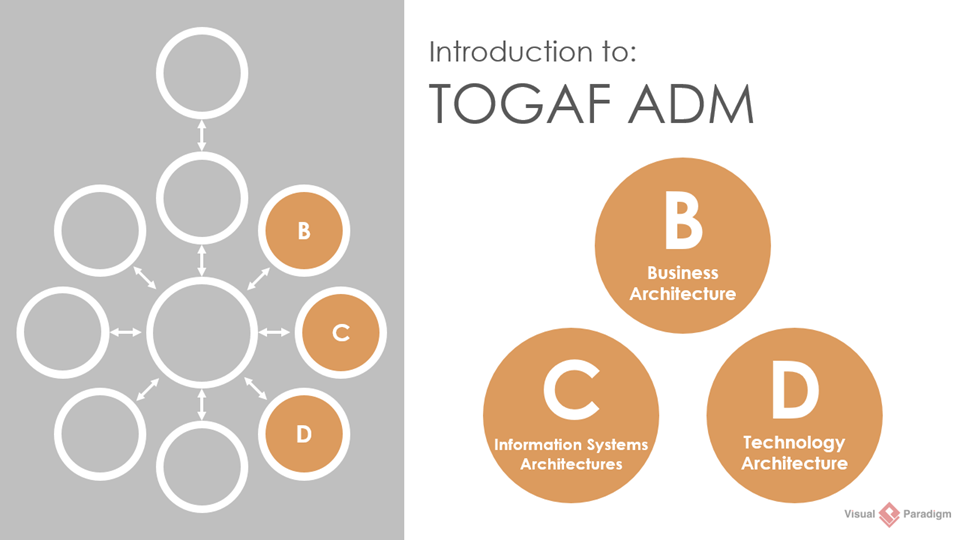Understanding the Relationship between TOGAF and ADM
TOGAF stands for The Open Group Architecture Framework. It is a framework for enterprise architecture that provides a common language, methodology, and tools for designing and managing enterprise architecture. TOGAF helps organizations to align their business goals and objectives with their technology infrastructure by providing a comprehensive framework for architecture development.
ADM, which stands for Architecture Development Method, is the core part of TOGAF. It is a step-by-step methodology for developing an enterprise architecture that aligns with the business objectives of the organization. The ADM is a flexible, iterative process that helps organizations to develop an architecture that is scalable, adaptable, and future-proof.
The relationship between TOGAF and ADM is that ADM is the core part of TOGAF. ADM provides the methodology for developing an enterprise architecture, while TOGAF provides the framework for applying the methodology. In other words, ADM is the process for developing an enterprise architecture, and TOGAF is the overall framework for managing and governing that process.
ADM is the core part of TOGAF because it provides a comprehensive methodology for developing an enterprise architecture that aligns with the business objectives of the organization. ADM is a flexible, iterative process that can be customized to meet the specific needs of an organization, making it an essential tool for developing a successful enterprise architecture.
ADM Phases for Developing an Enterprise Architecture Aligned with Business Objectives
The Architecture Development Method (ADM) is a step-by-step methodology for developing an enterprise architecture that aligns with the business objectives of the organization. The ADM consists of nine phases:
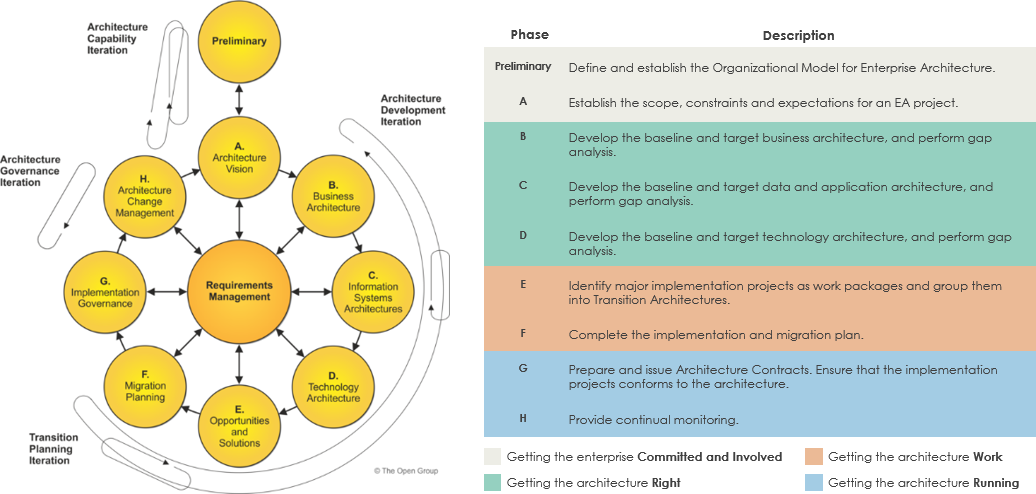
- Preliminary Phase: This phase involves establishing the scope and objectives of the architecture development initiative, identifying stakeholders, and obtaining approvals and funding.
- Phase A: Architecture Vision: This phase involves defining the architecture vision, which is a high-level description of the desired future state of the enterprise architecture.
- Phase B: Business Architecture: This phase involves developing a business architecture that describes the business strategy, goals, processes, and organization structure.
- Phase C: Information Systems Architecture: This phase involves developing an information systems architecture that describes the logical and physical components of the enterprise architecture.
- Phase D: Technology Architecture: This phase involves developing a technology architecture that describes the hardware, software, and network infrastructure required to support the enterprise architecture.
- Phase E: Opportunities and Solutions: This phase involves identifying opportunities and solutions to address the gaps between the current and future state of the enterprise architecture.
- Phase F: Migration Planning: This phase involves developing a migration plan that outlines the steps required to move from the current state to the future state of the enterprise architecture.
- Phase G: Implementation Governance: This phase involves establishing governance structures and processes to ensure the successful implementation of the enterprise architecture.
- Phase H: Architecture Change Management: This phase involves managing the changes to the enterprise architecture over time, including monitoring, reporting, and making necessary adjustments to ensure alignment with business objectives.
ADM – Phases for Developing an Enterprise Architecture Aligned with Business Objectives
Here are some guidelines for using the Architecture Development Method (ADM) in TOGAF:
- Customize the ADM to meet the specific needs of your organization.
- Involve all relevant stakeholders in the architecture development process.
- Define clear and measurable objectives for each phase of the ADM.
- Use a structured approach to gather and analyze information about the enterprise.
- Ensure that the architecture development process is aligned with the overall business strategy and goals.
- Use a phased approach to develop the enterprise architecture, starting with high-level views and progressing to more detailed views.
- Use architecture building blocks (ABBs) to facilitate reuse and reduce duplication of effort.
- Develop a clear and concise set of architecture principles that guide the development of the enterprise architecture.
- Use a repository to store and manage the architecture artifacts.
- Develop a communication plan to keep all stakeholders informed about the progress of the architecture development initiative.
- Use metrics to measure the effectiveness of the architecture development process and identify areas for improvement.
- Continuously monitor and evaluate the enterprise architecture to ensure that it remains aligned with the business strategy and goals.
The Benefits of Learning TOGAF
Enhance Your Career Opportunities and Develop Skills in Enterprise Architecture, Communication, and Problem-Solving. Learning TOGAF can provide several benefits, including:
- Improved knowledge and understanding of enterprise architecture: TOGAF provides a comprehensive framework for enterprise architecture that covers all aspects of an organization, including business, information systems, and technology infrastructure. Learning TOGAF can help individuals gain a better understanding of how these different aspects of an organization are interrelated.
- Enhanced career opportunities: As more organizations adopt TOGAF as their standard for enterprise architecture, there is an increasing demand for professionals who are skilled in using this framework. Learning TOGAF can open up new career opportunities for individuals in areas such as enterprise architecture, IT strategy, and IT governance.
- Increased efficiency and effectiveness: By using TOGAF to develop and manage enterprise architecture, organizations can achieve greater efficiency and effectiveness in their IT operations. This can result in cost savings, improved business agility, and better alignment between IT and business objectives.
- Better communication and collaboration: TOGAF provides a common language and methodology for enterprise architecture that can help to improve communication and collaboration between different stakeholders within an organization. Learning TOGAF can help individuals develop the skills needed to effectively communicate and collaborate with others in the enterprise architecture development process.
- Enhanced problem-solving skills: TOGAF provides a structured approach to enterprise architecture development that emphasizes problem-solving and decision-making. Learning TOGAF can help individuals develop these skills and apply them to other areas of their work.
A Comprehensive Tool for Streamlining TOGAF ADM Enterprise Architecture Development
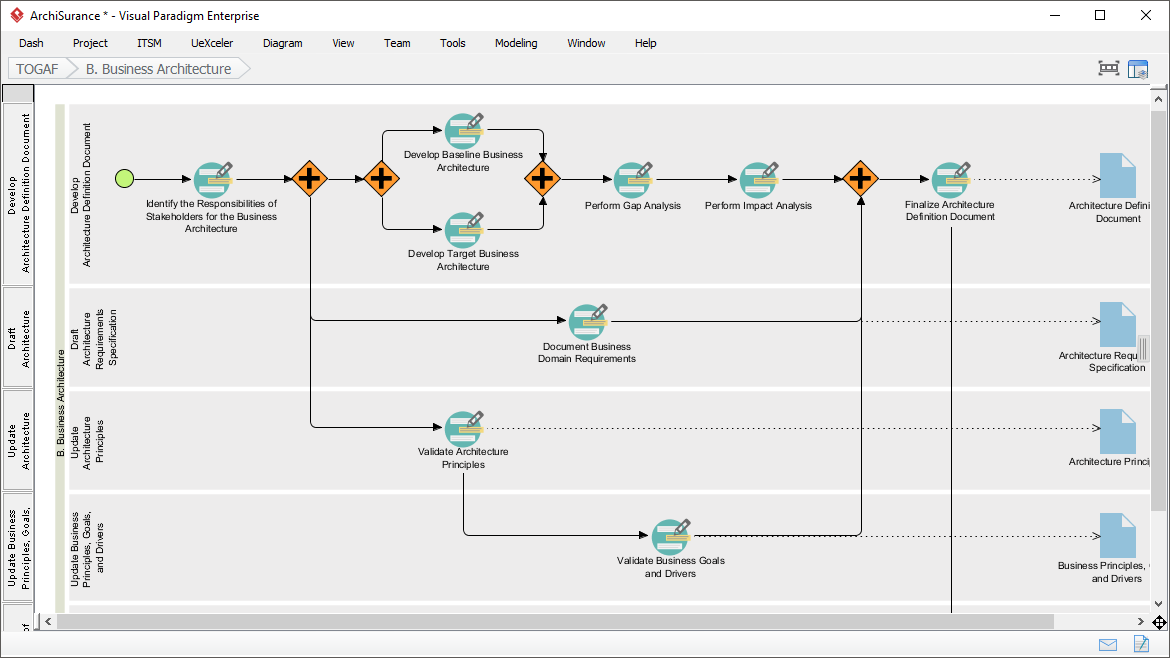
Visual Paradigm is a comprehensive modeling and design tool that supports the development of enterprise architecture using the TOGAF ADM methodology. It provides a wide range of features that can help architects and teams to manage and streamline the architecture development process. Some of the key features of Visual Paradigm include:
- Support for the entire TOGAF ADM methodology: Visual Paradigm provides templates and tools to support all phases of the TOGAF ADM methodology. This includes templates for the development of architecture artifacts, as well as tools for collaboration, analysis, and reporting.
- Easy-to-use interface: Visual Paradigm has an intuitive and user-friendly interface that makes it easy for even novice users to get started with enterprise architecture development.
- Guide-Through process: Visual Paradigm’s Guide-Through process provides step-by-step guidance through the TOGAF ADM methodology, helping users to quickly understand and apply the framework.
- Collaboration and team support: Visual Paradigm supports collaboration and teamwork by providing tools for sharing and managing architecture artifacts, as well as communication and feedback features.
- Integration with other tools: Visual Paradigm integrates with other tools and platforms, such as diagram editor, documentation generator to streamline the enterprise architecture development process.
Therefore, Visual Paradigm is a suitable software for TOGAF ADM. Even if you are not an experienced enterprise architect, you can use Visual Paradigm’s Guide-Through process to help kickstart the enterprise architecture development process easily. The Guide-Through process provides step-by-step guidance through the TOGAF ADM methodology, making it easy for novice users to get started with enterprise architecture development.
Visual Paradigm Guide-Through Process: Streamlining TOGAF ADM with UML and ArchiMate
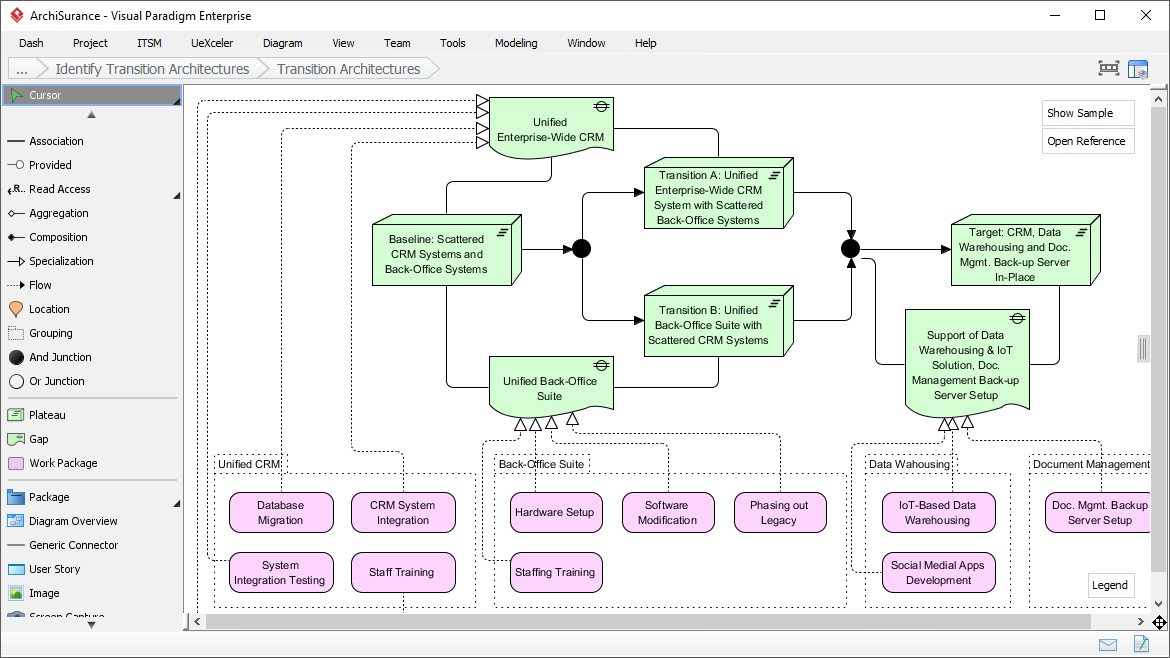
Visual Paradigm’s Guide-Through Process for TOGAF ADM methodology uses UML and ArchiMate as visual modeling languages to develop various artifacts such as business models, application models, data models, and technology models. These artifacts are essential components of the TOGAF ADM methodology and are used to describe the current and future states of an organization’s enterprise architecture.
Using visual modeling languages like UML and ArchiMate, architects can represent complex information and relationships in a clear and concise manner. This makes it easier for stakeholders to understand and communicate the architecture and its implications for the organization.
Furthermore, Visual Paradigm’s Guide-Through Process automatically generates documents based on the artifacts developed in each phase of the TOGAF ADM methodology. This ensures that all deliverables are consistent and up-to-date, reducing the risk of errors and inconsistencies in the architecture development process.
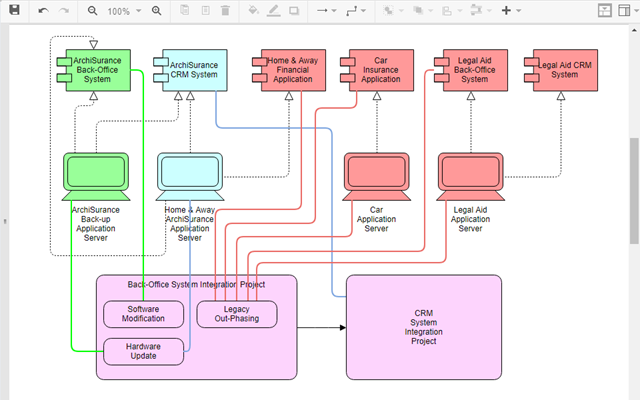
By using UML and ArchiMate as visual modeling languages and generating documents automatically, Visual Paradigm’s Guide-Through Process for TOGAF ADM methodology streamlines the enterprise architecture development process and helps to ensure the accuracy and consistency of the architecture artifacts throughout the entire development lifecycle.
Reference
- Powerful TOGAF ADM Toolset
- Introduction to the Architecture Development Method (ADM)
- A Practical Tutorial for TOGAF


